Imagine that you are a new short-term guest in a Skilled Nursing Facility (SNF) for rehabilitation and nursing services. After you move in, you go through the admission process. It includes a lot of information, some of which you may or may not eventually recall; you are just happy to be out of the hospital and in your own clothes. Over the next few days, you go through the various introductory interviews with the SNF staff, including the dietician, social worker, therapists, and nurses. Many of these people ask you the same questions, leading you to wonder, “Are these people talking to each other?”
This annoyance notwithstanding, you end up getting most of your questions answered and have an idea of what is going to occur over the next couple of weeks. These weeks go by without another formal discussion about your plan of care, your progress, or your plans once you leave the SNF. You are not sure how your recovery is going in the minds of the SNF decision makers, and you have some lingering questions and concerns that have not seemed important enough to bother anyone about. You are generally content with the SNF and the rehab and are not seriously thinking about going home yet.
At the beginning of the third week, the social worker talks with you about setting up a care conference with your important family members. During this conference, you hear that the therapists and nurses believe that you are physically ready to go back home. This comes as a bit of a surprise to you and your family. There are a number of barriers to a smooth transition home that could have been addressed much earlier had you been offered a forum in which to share your situation, and your lingering questions were found to be quite important. The SNF decides you need to stay an extra week to resolve these barriers to the transition home.
Alternatively, imagine that during the admission process the interdisciplinary team (IDT) invites you and your important family members to meet with them once per week, every week, until you go home. They refer to this discussion time as Grand Rounds. The Director of Rehabilitation (DOR) leads the discussion, which makes sense, since you are at the SNF for rehab in order to return home. The idea of Grand Rounds eases your mind. You will get to show the IDT your progress, reiterate your goals, and discuss the questions you may have. The team will get to review any concerns they have with your progress or goals. You will be included in the weekly management of your care while at the SNF, and all parties concerned will understand your goals, wants, and needs in preparation for a smooth transition back home.
The second scenario describes a program called “Grand Rounds” or “Progress Rounds.” Cindy Benfield, Healthcare Administrator at Good Samaritan Loveland Village, and Melissa Riehl, Loveland’s Director of Rehabilitation, have recently transitioned to Grand Rounds at their SNF. Cindy says they are quickly realizing many benefits. “Compared to the traditional Medicare meeting system and inconsistent Care Conferences, we have found that Grand Rounds strengthen the relationship bonds between our care givers and those we serve. Additionally, we’re finding valuable time savings for our often overwhelmed staff.”
Cindy describes an additional benefit to holding Grand Rounds: Streamlining patient management meetings. The randomly scheduled Care Conferences with families have all but disappeared, and the various phone calls and on-site visits to social workers from family members have drastically reduced in number. Melissa has noticed the enhancement in communication, “Family members at Loveland Good Samaritan have been very happy with the increased communication with staff, and Grand Rounds are quickly becoming our best resource for relaying information between all the important parties, including the guest and their family members.”
As ideal as this sort of system sounds, it is not always easy to move away from the traditional IDT-only Medicare Meeting. Sara Dent, Administrator for St Paul HealthCare Center in Denver, Colorado, explains how their team managed the change, “Because Grand Rounds aligns with our person-directed values, we were in agreement that we had no choice but to move to it. We knew that there would be problems and challenges to overcome, so we said that we were going to try it for three months, no matter what. We’re now one month into it. While we have had to make a number of adjustments and refinements along the way, we now average only seven minutes per guest discussion.”
Besides being person-centered, Grand Rounds is a system that may align with the future of healthcare reimbursement incentives. The days of 30-day Skilled Lengths of Stay appear to be ending, and a financial premium will be placed on quality, specifically, patient satisfaction. SNFs will need to help assure that re-hospitalizations do not occur even after patients leave the SNF. They will be accountable for up to 30 days following the hospital discharge, yet might only have the person under their roof for 20 days. Grand Rounds serves to assure a coordinated, client-included process that aims to remove barriers to health improvement efficiently, and then prepares the person to successfully transition out of the SNF. It begins this process early and maintains it each week.
Does this sound like something that might benefit your SNF? Do you have a strong dedicated DOR that could lead this sort of weekly discussion? If so, here are ten lessons learned from the St Paul and Loveland Good Samaritan experiences:
- Start by gaining buy-in, or at least understanding, from the IDT as to the overall rationale for the change. Keep these reasons in front of people as they struggle to make Grand Rounds work.
- Rather than demanding the change at once, suggest a trial, and then commit to a time frame. People may be more agreeable to a trial and before you know it, they will make it their own system.
- Be flexible on whether or not you will ask the team to travel room to room or if you will have each client be transported to one location to meet with the IDT. Either method may work.
- Clearly communicate the Grand Rounds system to each client and family. For everyone to get the full value out of it, people need to understand that Grand Rounds is the preferred time and place for them to communicate with the IDT. St Paul and Loveland Good Samaritan provide a short explanation letter within their admission packets, and then the social worker and DOR explain it to them again during their introductions.
- Pragmatically make sure everyone understands the amount of time allocated for each client discussion. 10 minutes seems to be a reasonable ceiling. Both St Paul and Loveland Good Samaritan now average about 7 minutes per client discussion.
- To respect family member’s time while allowing the team some flexibility, let the client and family know that their meeting will be within the period of an hour. For example if you have 12 skilled clients, you might tell 6 of them that their meetings will be between 9 and 10am, while the other 6 will have their meetings between 10 and 11am.
- Typically, the DOR leads the discussions. This leader needs to address the important areas with each client, assure team and family members have a chance to speak, and keep people on task. While in this capacity, the DOR becomes an even more vital part of the SNF’s Skilled operations.
- Do not be afraid of scheduling out individual family conferences for really complicated or sensitive situations. Grand Rounds may not meet the needs of every situation, but it has been found to cover the needs of the vast majority of skilled clients.
- Allow the IDT to complete much of their paperwork during and between the discussions. Care planning can be completed, nursing progress notes can be written to support the skilled stay, even orders can be written. The meeting time can be billable for therapy if they document the skilled discussion, education, and problem solving that occurred. Sometimes, it may be appropriate for other therapists to attend a respective meeting..
- Consider meeting as an IDT prior to Grand Rounds to review any notable situations quickly, so that everyone is on the same page. St Paul meets at 9:15am, and then begins grand rounds for about 20 skilled clients at 9:30am.
SNF Administrators and DOR’s may soon realize that they need to revamp vital patient management systems. Those that thoughtfully switch from the institutional Medicare Meeting to the patient-centered Grand Rounds will realize the benefits that come with enhanced patient and family involvement, while those that keep the status quo may struggle to successfully manage patients given a reduced number of days in which to do so. If you find yourself struggling to make sense of the change, put yourself in the patient’s shoes. What sort of system would you prefer?
_____________________________________________________________________
Tyler Keeter PT, DPT, MHA is the Colorado Area Rehab Director for Infinity Rehab. He is also Adjunct faculty for Regis University’s Doctor of Physical Therapy program, teaching courses in business planning, professional advocacy, and service learning. Dr. Keeter has presented the concepts of person-directed rehabilitation at many conferences including the American Health Care Association National Conference, Colorado Health Care Association Conference, and the Nebraska chapter of Leading Age. He thoroughly enjoys supporting the therapists in the Colorado Region in the service of their residents and clients.






